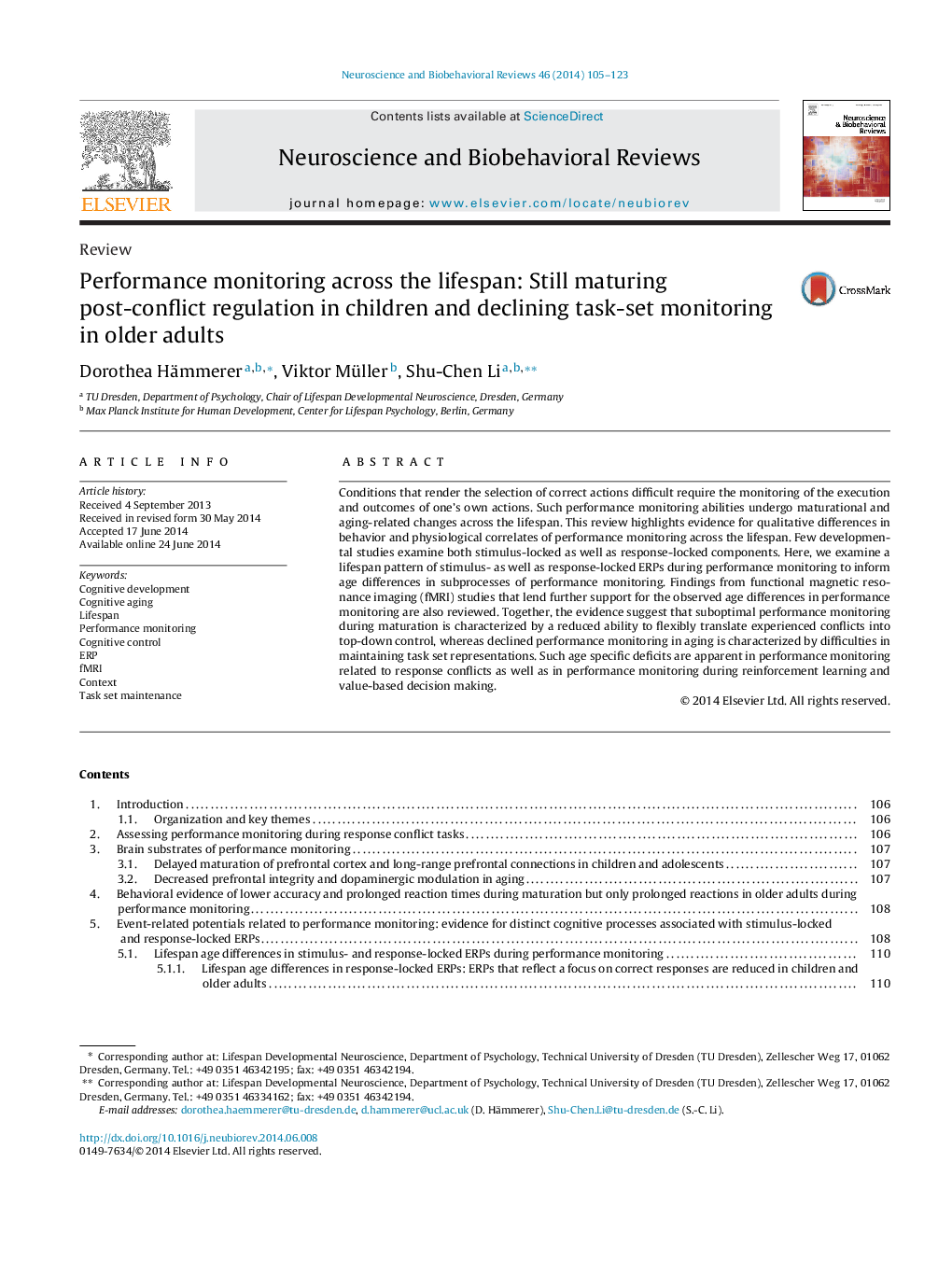| Article ID | Journal | Published Year | Pages | File Type |
|---|---|---|---|---|
| 937477 | Neuroscience & Biobehavioral Reviews | 2014 | 19 Pages |
•Lifespan development of response- and stimulus-locked ERPs during performance monitoring.•Reduced translation of conflicts into top-down control during child development.•Reduced regulation of stimulus inputs based on task sets during aging.
Conditions that render the selection of correct actions difficult require the monitoring of the execution and outcomes of one's own actions. Such performance monitoring abilities undergo maturational and aging-related changes across the lifespan. This review highlights evidence for qualitative differences in behavior and physiological correlates of performance monitoring across the lifespan. Few developmental studies examine both stimulus-locked as well as response-locked components. Here, we examine a lifespan pattern of stimulus- as well as response-locked ERPs during performance monitoring to inform age differences in subprocesses of performance monitoring. Findings from functional magnetic resonance imaging (fMRI) studies that lend further support for the observed age differences in performance monitoring are also reviewed. Together, the evidence suggest that suboptimal performance monitoring during maturation is characterized by a reduced ability to flexibly translate experienced conflicts into top-down control, whereas declined performance monitoring in aging is characterized by difficulties in maintaining task set representations. Such age specific deficits are apparent in performance monitoring related to response conflicts as well as in performance monitoring during reinforcement learning and value-based decision making.
